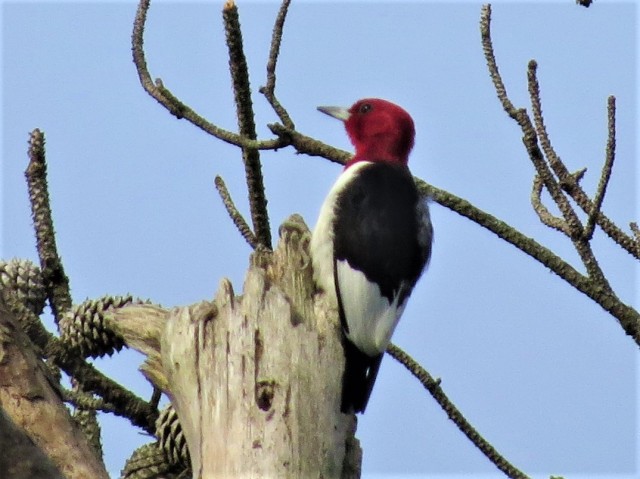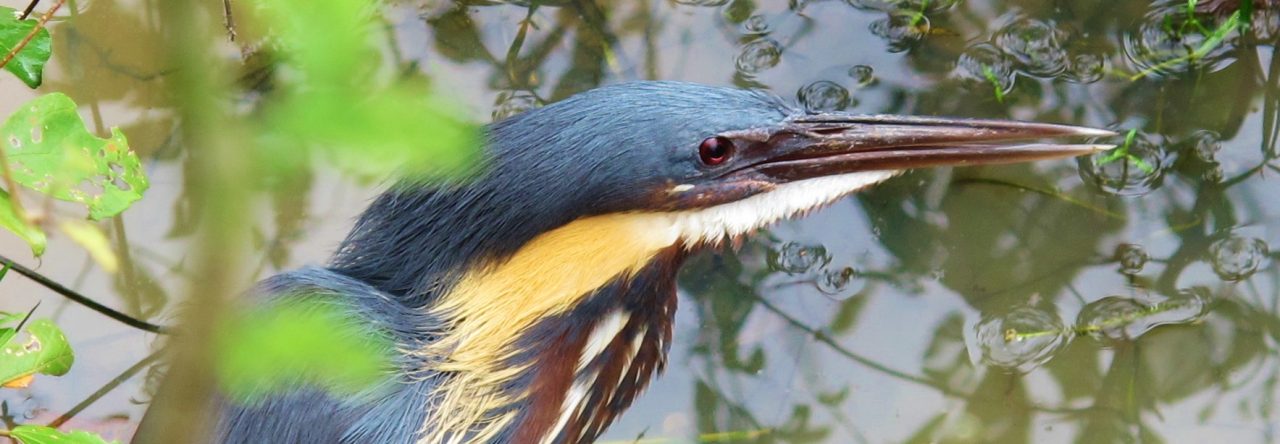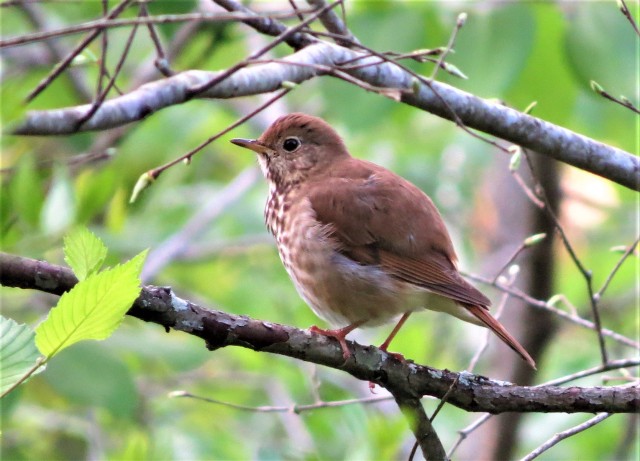
A common sight this spring at migrant hotspots has been birders with their heads bowed, muttering to themselves about how few birds are around compared to usual. I don’t feel exactly the same, as this is my first spring in Texas, and I’ve been steadily adding lifers to my list – but I can understand the frustrations of those who have been here longer than me. It’s true that some sites have been very quiet indeed, while others have had some decent species variety but nothing like the numbers one would expect here in a “good” year.

However, it definitely hasn’t all been “doom and gloom”. After three visits, Sabine Woods in Jefferson County in east Texas is already shaping up to be one of my all-time favorite birding destinations. It has all the magic ingredients: a compact, mature woodland in a coastal location surrounded by mile upon mile of coastal marshes. It would be hard to imagine a better-placed migrant trap. Additionally, it has been set up with both birds and birders in mind, with several drips providing fresh water for tired trans-Gulf migrants to drink and bathe, and a network of paths from which all corners of the reserve can be easily viewed.

A local birder at Sabine Woods mentioned to me that April is either “good” or “great” at the site, and while I have not yet experienced a classic fallout there, I encountered an excellent range of species on April 16th and 22nd: Yellow-billed Cuckoo, Veery, Grey-cheeked, Swainson’s and Wood Thrushes, Ovenbird, Worm-eating, Blue-winged, Prothonotary, Swainson’s, Tennessee, Hooded, Cape May, and Yellow Warblers, Louisiana and Northern Waterthrushes, and of course the crowd-pleasing colorful ones – Blue and Rose-breasted Grosbeaks, Scarlet and Summer Tanagers, and Indigo and Painted Buntings.

From Houston, a visit to Sabine Woods can easily be combined in a day trip with a stop at Anahuac NWR in neighboring Chambers county, and this is exactly what I did on April 16th. I started the day in search of an outstandingly attractive lifer, the stunning Red-headed Woodpecker, at a reliable stakeout just off i-10 at the White Memorial Park. This species is usually found at the northern edge of the park, where several dead trees provide nesting holes, and this is where I encountered three individuals engaged in some sort of territorial dispute.

A few miles down the road towards Anahuac, two Swainson’s Hawks provided a nice fly-by but my photos turned out a lot less impressive than the close views I obtained. I stopped to check the flooded field at the entrance of the Anahuac reserve for shorebirds – I had no intention of going onto the reserve proper today, but when another birder mentioned he had seen no fewer than 5 Least Bitterns on the Shoveler Pond Loop, I changed my mind. However, the only bittern I saw was a flyover American Bittern, although the trip was certainly not a waste of time as several gorgeous Purple Gallinules showed well, and there was the usual assortment of attractive and easily-viewed birds showing from the road around the pond.

Anahuac delivered again the following weekend, with a lovely assortment of shorebirds on the reserve entrance field including 2 Hudsonian Godwits, and at least 4 White-rumped Sandpipers. With Wilson’s Phalarope ticked off the following day on Galveston Island, I am gradually getting all those Nearctic wader species safely under the belt that I had only previously seen as vagrants in the UK (or in the case of the Hudsonian Godwit, New Zealand!). Of the regular Texas shorebirds, I now only need Baird’s and Buff-breasted Sandpipers, both of which I have already seen in the UK, and American Woodcock for my life list, which in my view has only marginal shorebird status!

There was also a Dickcissel on overhead wires along the Anahuac entrance road (lifer), and finally a King Rail obliged me with brief views on the Shoveler Pond loop – which I figured was about time after at least 8 visits to the site.

The day that everyone had been waiting for finally happened on April 23rd, statistically the “peak” of spring migration in Texas. A cold front had passed through late afternoon on Saturday 22nd – unfortunately too late to bring anything new to the expectant birders at Sabine Woods. However, by Sunday morning the air was distinctly cool and a strong north wind was blowing, stopping migrants in their tracks and heralding a marked change from the sweltering humidity and southerly airflow of the day before.

I literally flipped a coin for my decision over whether to return to Sabine Woods, or head to Lafitte’s Cove in Galveston. Lafitte’s Cove won, first because it’s a lot closer to Houston than Sabine Woods, and second, because a proper rarity had been reported from there on Saturday evening, a Black-whiskered Vireo.

I was happy with my decision as soon as I arrived, with numbers of singing Baltimore Orioles, a Yellow-billed Cuckoo, Rose-breasted Grosbeaks and Indigo Buntings all showing well inside the first ten minutes. Things went on from there, with some spectacularly enjoyable birding throughout the day in cool, sunny weather conditions. Not only were the birds great, but the birders were too …. it turned into a thoroughly social occasion, with a rotating cast of at least 40-50 birders in this small wood throughout the day.

During my 8.5 hour visit, my personal avian highlights included: Broad-winged and Swainson’s Hawks, Wilson’s Phalarope, Yellow-billed Cuckoo, Red-eyed, Warbling, and Black-whiskered Vireos, Grey-cheeked and Swainson’s Thrushes, Ovenbird, Worm-eating, Blue-winged, Prothonotary, Tennessee, Cape May, Magnolia, Yellow, Prairie and Blackpoll Warblers, American Redstart and Northern Parula.

I was especially pleased to get reasonably good photos of both Cape May and Prairie Warblers, two of the rarer migrants here today. It took the vagrant Black-whiskered Vireo more than six hours to make a proper appearance, but from 2.00pm onwards this distinctly underwhelming bird – somewhat resembling a dull Red-eyed Vireo overall – was showing more or less constantly in bushes near the central water drip, although it was maddeningly difficult to get photos of, and in the end I had no useful images of this bird at all.

Texas 2017 Year List: 297
Texas Life List: 323
World Life List: 2,175











